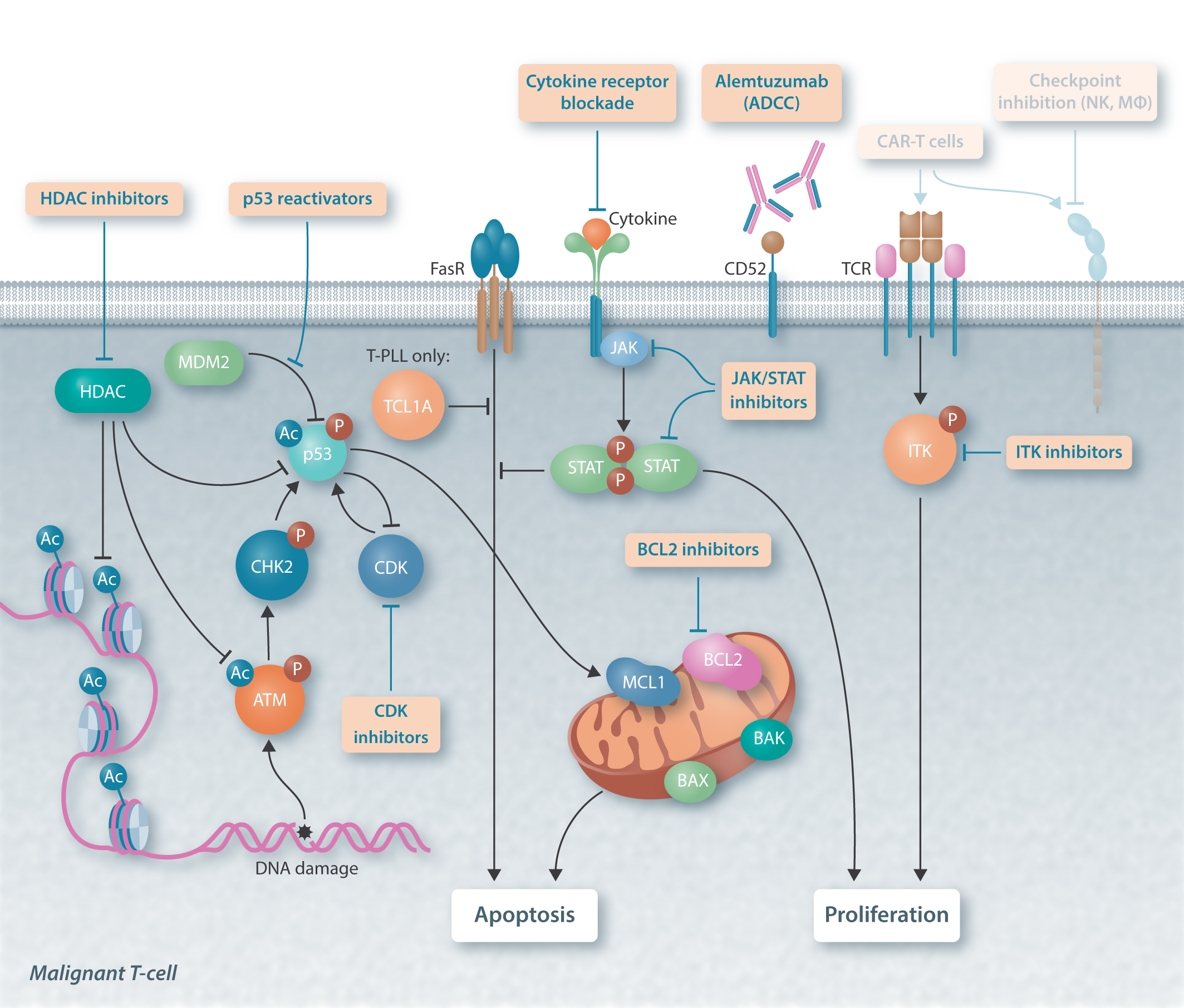Dual STAT3/STAT5 inhibition as a novel treatment strategy in T-prolymphocytic leukemia
Abstract:
T-prolymphocytic leukemia (T-PLL) is a rare, aggressive T-cell malignancy with poor outcomes and an urgent need for new
therapeutic approaches. Integrating genomic data and new transcriptomic profiling, we identified recurrent JAK/STAT mutations
(predominantly in JAK3 and STAT5B) as hallmarks in a cohort of 335 T-PLL cases. In line, transcriptomic and protein analyses
revealed constitutive JAK/STAT activation in virtually all samples. Consequently, we explored the anti-leukemic potential of dual
STAT3/STAT5 non-PROTAC degraders in T-PLL, with JPX-1244 as our lead substance. JPX-1244 efficiently and selectively induced
cell death in primary T-PLL samples, including those resistant to conventional therapies, by blocking STAT3 and STAT5
phosphorylation and by inducing their degradation. The extent of STAT3/STAT5 degradation directly correlated with cytotoxicity.
RNA-sequencing confirmed the treatment-related downregulation of STAT5 target genes. While JAK/STAT mutations did not predict
responses to pharmacologic STAT3/STAT5 degradation, elevated expression of TOX, PAK6, and SPINT1 were associated with drug
sensitivity. In subsequent combination screenings, cladribine, venetoclax, and azacytidine emerged as most effective combination
partners of STAT3/STAT5 degraders, even in low-responding T-PLL samples, all synergistically reducing STAT5 phosphorylation.
These findings highlight dual STAT3/STAT5 inhibition, particularly in combination with hypomethylating and BCL2-targeting agents,
as a promising interventional approach in T-PLL, warranting further investigation.















